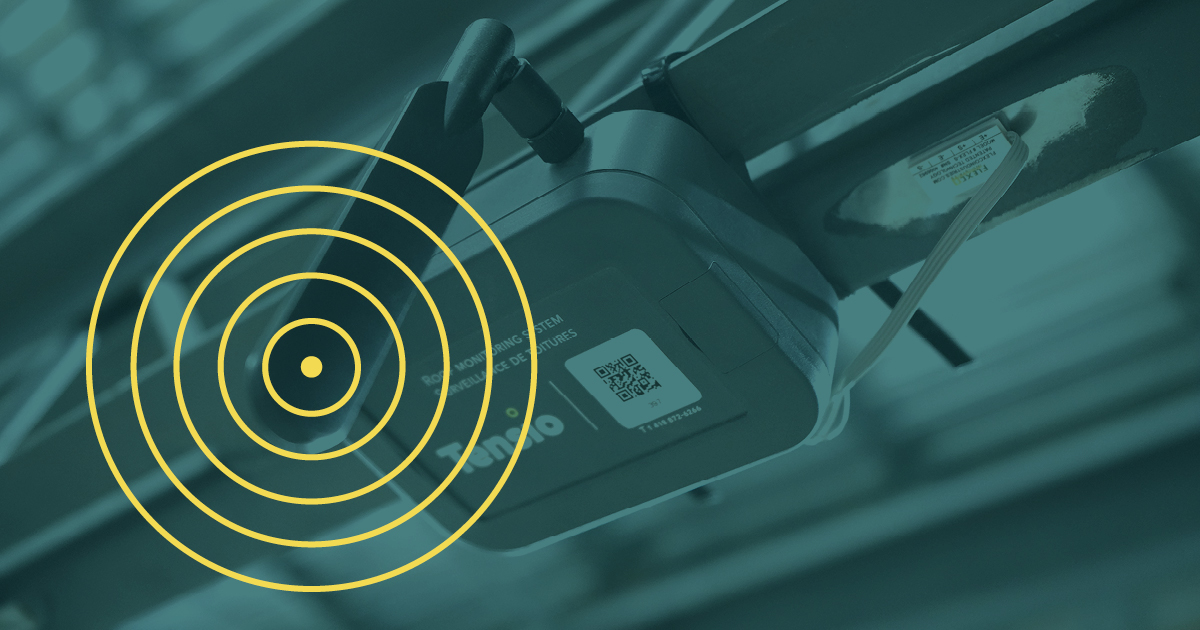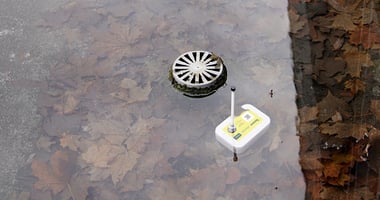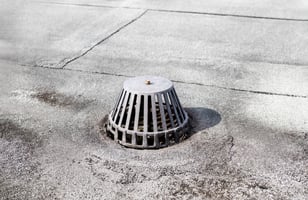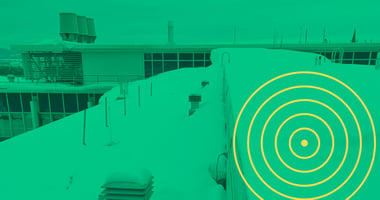Preventive Maintenance: Simplifying Roof Snow Removal

Choosing the right moment to clear snow from roofs of industrial, commercial or institutional buildings often depends on subjective observations or the experience of its occupants. Because snow removal operations are costly and can be logistically complex, it’s best to have reliable data on which to base your decision.
How much weight can the roof really support, and what are the risks associated with snow accumulation or snow removal? Bring building management into the 4.0 era with smart sensors.
Traditional methods vs. smart sensors: compare your options
Each building operator usually has their own methods of assessing snow and ice build-up on roofs. These include climbing on the roof to get a first-hand look (and getting covered in snow), installing rulers and looking for signs of bowed joists or rubbing doors. Unfortunately, these unscientific techniques are prone to human error!
Alternatively, a specialized firm can be hired to ascertain the roof’s load capacity and evaluate the actual weight of the snow. However, this weight calculation must be carried out repeatedly since it’s only valid for that specific precipitation event.
This is where Tensio’s intelligent sensors come into play: installed on certain steel components (such as beams or joists), they measure the weight of the snow supported by these load-bearing structural components in real time.

Picture : Tensio smart sensor
The collected data is sent to Tensio servers using IoT technology and compiled in a Web application. The average load percentage based on roof capacity is then displayed, and the snow must be cleared once it reaches 100%.
But that’s not all! To avoid unpleasant surprises, this technology also takes into account the weather forecast for the next seven days based on the building’s location. A model of the anticipated snow is then created to help plan removal operations. If snow clearing is required, building operators receive email alerts before critical thresholds are reached.
How does snow affect buildings?
While snow accumulation may ultimately cause a roof to collapse, there are many other benefits to removing snow before its weight interferes with the structure’s load-bearing capacity.
- Ensures the proper functioning of building mechanics by preventing unanticipated structure deformation caused by the weight of snow.
- Avoids service interruptions and losses associated with an overloaded roof. After all, many businesses rely on indoor operations!
- Limits water infiltration during spring by, among other things, making sure that water drains adequately and that snow loads don’t exceed the roof’s capacity during rain on snow events.
 Picture : Canam Buildings
Picture : Canam Buildings
Benefit from the advantages that smart sensors have to offer
- Facilitate building management. With verified engineering data at your fingertips, you no longer have to rely on inaccurate estimates based on subjective observations! Each year, sensor predictions use the history of the building to become more accurate. This customization is based on a roof’s geometry and location along with the structure’s past responses to weather events (precipitations, winds, temperature variations, etc.). Having access to data allows you to adapt and thus optimize your operations while targeting areas with greater snow accumulation. The sensors also provide access to centralized load data of all buildings belonging to the same company.
- Save time and money. This technology saves you from having to remove snow (and spend money!) when it’s not yet worth it — and from waiting too long and thus resort to more expensive and risky emergency snow removal operations. It also eliminates the need for roof inspection rounds, thereby optimizing the time spent on these evaluations and reducing the costs associated with building maintenance.
- Ensure the preventive maintenance of infrastructure. Preventive upkeep is essential to minimizing premature degradation. By relying on the 4.0 technology of smart sensors, you get to maintain your building’s value and help preserve its integrity.This also provides another benefit: it increases your roof’s service life by minimizing access and thus potential damage. As we know, the roof is at risk of being damaged every time someone goes on it and plows it.
- Adapt to climate change. Early or late storms, thawing, freezing rain, mixed precipitation, rapid melting: weather events are increasingly unpredictable and intense. With Tensio’s sensors, your buildings adapt to environmental challenges, allowing you to deal with such changes safely and efficiently.
- Contribute to the preservation of skills and knowledge. In other words, you facilitate the implementation and follow-up of good maintenance practices over time. The maintenance of a warehouse or factory roof and removal of snow no longer has to depend on senior personnel who “knew” the building (and took their knowledge with them when they left)!
- Focus on safety. In the past, owners often erred on the side of caution when it came to building management. Not anymore! Today, you get to make informed decisions based on real-time data. Gone are the days of roof damage, accidents and injuries related to snow removal, and, in extreme cases, roof collapse. Smart sensors allow you to ensure the safety of the building’s occupants and people with access to the roof. Everyone wins!
Smart buildings: preventive maintenance, autonomy gains and simplified management!
Such innovation is in line with the design-build approach favoured by Canam: for this reason, all our prefabricated buildings built with Murox can be equipped with Tensio’s intelligent sensors, an option that’s been available since the beginning of 2022.
%20(2).png?width=150&height=50&name=Tensio_Logo-SansPositionnement_RVB%20(1)%20(2).png)



